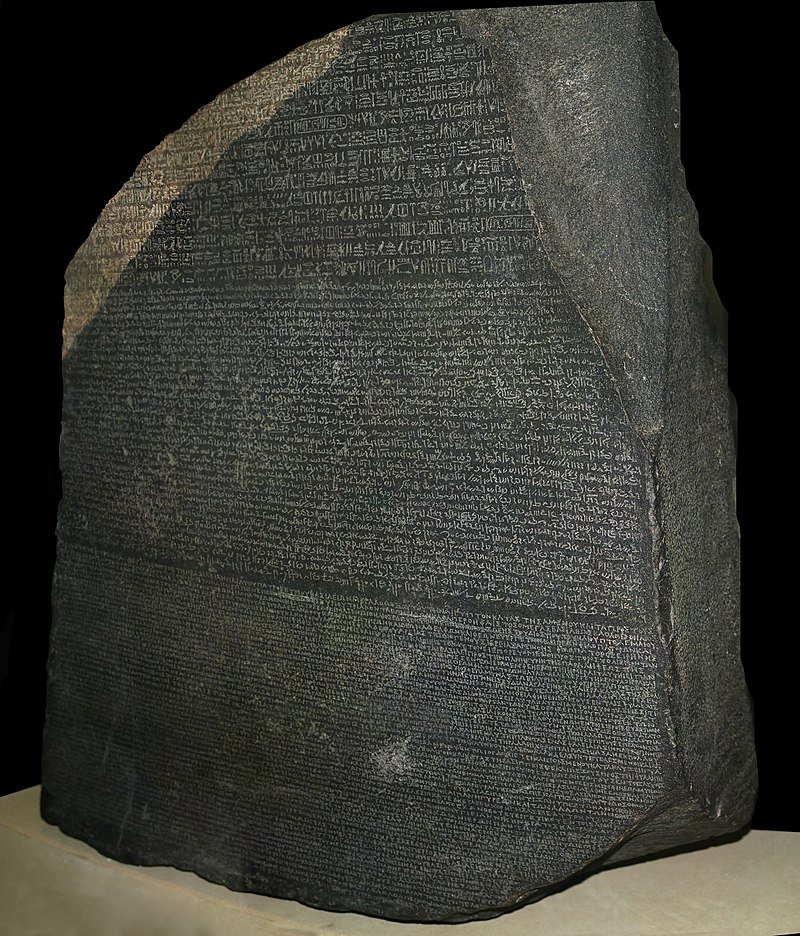In the vast tapestry of history, few artifacts hold as much significance as the Rosetta Stone. This ancient Egyptian stone stele stands as a testament not only to the ingenuity and culture of past civilizations but also as a bridge between two worlds: the known and the unknown. With its inscriptions in three distinct scripts, it became the key that unlocked the enigmatic world of Ancient Egyptian hieroglyphics.
The Rosetta Stone is no ordinary artifact. Carved into its surface are three versions of a single decree. These inscriptions were meticulously crafted in three languages: Ancient Egyptian hieroglyphics, which were mainly used for religious texts and formal inscriptions; Demotic, a more cursive version of the Egyptian script tailored for everyday use and aptly named after its meaning ‘language of the people’; and lastly, Ancient Greek script, which was prevalent due to the Greek rulers of Egypt at the time.
Why was a single decree inscribed in three different languages? The answer lies in the political and cultural landscape of 196 BC Egypt. The stele was commissioned to commemorate the establishment of a divine cult for the Hellenistic ruler, Ptolemy V. The Ptolemaic dynasty, of Greek origin, had been ruling Egypt for several generations by this time. To ensure that the decree reached and resonated with the diverse population they governed – the Egyptian priests, the local populace, and the ruling Greek elites – it was essential for the message to be inscribed in multiple scripts.
However, by the time the stone was rediscovered in the late 18th century, knowledge of reading hieroglyphics had been lost for over a millennium. The language of the ancient Pharaohs, once inscribed on grand temple walls and papyrus scrolls, had become cryptic symbols to modern eyes. The last known inscriptions in hieroglyphics were crafted in the 5th century AD, and since then, the ability to read these symbols had vanished. Without a key to decipher them, it seemed as though the thoughts, beliefs, and history of an entire civilization would remain locked away forever.
This all changed in 1799. Near the town of Rashid, known historically and popularly as Rosetta, a remarkable discovery was made. Buried beneath the sands of time was the stone that bore the decree in three scripts. It was an unprecedented find – the first bilingual hieroglyphic text ever discovered. This stone held the promise of finally deciphering the ancient script, as scholars could compare the known Greek text with the mysterious hieroglyphics.
Among those who took on the challenge of decoding the hieroglyphics was a French scholar named Jean-François Champollion. While many had attempted and made progress before him, it was Champollion, in 1822, who made the groundbreaking discovery, nearly a quarter-century after the stone’s rediscovery. By comparing the Greek and hieroglyphic texts, he successfully deciphered the ancient script, laying the foundation for our modern understanding of Ancient Egyptian language and culture. This achievement was monumental, akin to opening a time capsule and unveiling the secrets of a bygone era.
Today, the Rosetta Stone is housed in the British Museum in London. It remains one of the museum’s most prized and visited artifacts. Every etching, from the smallest glyph to the most intricate symbol, tells a story, not just of the decree it bears, but of an entire civilization that once flourished along the banks of the Nile. It stands as a testament to human perseverance and curiosity, a beacon for scholars, historians, and enthusiasts, reminding them of the interconnectedness of cultures and the ceaseless march of time that constantly shapes and reshapes our understanding of the past.
READ MORE:
